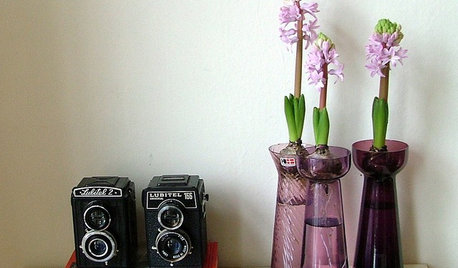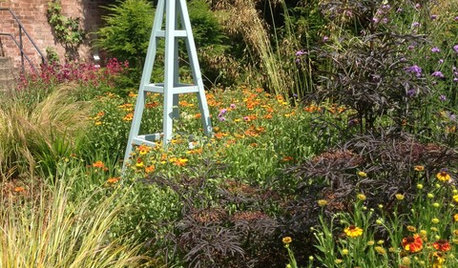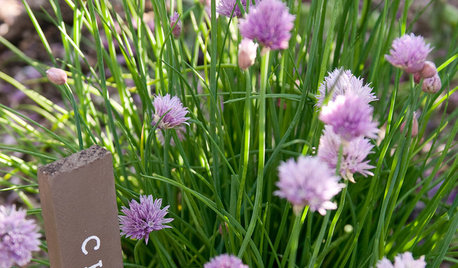With the cold weather my reading hobby kicks into higher gear. More and more of what I read is on the internet or even :gasp: on my cell.
Here is an interesting little thing from the Arnold Arboretum. I read it imagining replacing every reference to DED with EAB. How little times have changed.
Interesting reference to the arrival of Metasequoia seeds at the end.
"
17
ARNOLDIA
A continuation of the
BULLETIN OF POPULAR INFORMATION
of the Arnold Arboretum, Harvard University
VOLUME 8 APRIL 30, 194H NUMBER 4
DESTROY DEAD ELM WOOD IMMEDIATELY
M U CH has been written in the past months concerning the Dutch Elm Disease
and its effective control. "Spray now and save your elms," "Contribute
to this fund now and save New England’s elms," are only two of several
headlines originating from various sources, to try to force the property owner into
spending money in certain ways for the so-called "control" of the disease. Unfortunately,
such headlines are most misleading, and property owners are due a
thorough report of the Dutch Elm Disease situation as it appears at the present
time.
It must be admitted that the Dutch Elm Disease has come to stay, and will be
with us a long, long time. We hope that it will not be responsible for eradicating
all the elms of New England, but it will continue to be an ever-present menace
for a number of years. Regardless of what the final control solution will be, there
are thousands of elms in remote places which can harbor the disease or the insects
carrying the disease, or both -trees which are growing on inaccessible land
or which are on such cheap land that it will not pay to treat them for the disease.
This fact is not pleasing to contemplate, but it must be considered when discussing
a practical means of control.
A general meeting of scientists working on the control of this pest in New
England, was called on November 7, 1947, by the New England Council in the
Statler Hotel, Boston. Present were competent representatives from all the New
England State Experiment Stations as well as from New Jersey and Maryland.
Present also were representatives from the U. S. Department of Agriculture and
certain Canadian Experiment Stations. In other words, this was a general meeting
of all the interested scientific groups doing research on control problems for
the New England area. Many of the men have been working on some phases of
control as major research projects. This is not the place to discuss all the research
projects under way at the present time, nor to study a history of control methods
18
used earlier in Ohio, New Jersey and New York. Certain facts were brought out
during the course of these discussions which might be of interest to New England
property owners, and it would seem advantageous to discuss a few at this time.
’
No Practical Control of Disease Fungus Yet
There is no practical method of spraying to control the disease fungus once it
is in living trees. All spraying attempts are directed towards controlling the insects
on the trees.
No Positive Practical Control by Spraying of the Bark Beetles
As most people know, there are two types of bark beetles which feed in the
bark of dead or diseased trees and are responsible for carrying the fungus to living
trees. Many statements have been made erroneously, that spraying will definitely
control these insects. Unfortunately this is not true. It is practically impossible
to cover all the small twigs of elms with sufficient spray materials to adequately
kill insects in all parts of the tree. It is true that DDT kills bark beetles, but
only when used in far greater quantities than has ever been used before on trees
-quantities such that the price of spraying is often prohibitive for all practical
purposes. The actual mechanics of applying these concentrated sprays, even with
the latest types of blowers or hydraulic equipment, presents many serious problems
which, it is hoped, will be solved with more experimentation. Consequently,
thorough control of the bark beetles can not be obtained by spraying this spring
with the equipment and materials normally in use at the present time.
Sanitation is the Best Present Control Method
Sanitation would include several things. First, it would include the removal
and destroying of all dead elm wood. This is best done by burning immediately.
Elm wood can also be stored indoors so that when bark beetles emerge they can
not fly out-of-doors. Spraying dead elm wood with oil (1 lb. of DDT in 1~~ gallons
of No. 2 fuel oil) on all sides has also proved an effective means of preventing
the emergence of bark beetles and of killing them if they alight on such treated
wood. Immediate burning, however, is best. Elm wood, dumped in piles, or
thrown about miscellaneously at town dumps can serve as a source of disease infection
for the entire community, unless it is burned or thoroughly sprayed immediately.
Elm logs over a year old do not serve as likely sources for hibernatingg
beetles, but freshly-cut elm logs do.
Completely removing the bark of all logs as soon as they are cut, or keeping
them completely submerged under water has also been recommended, but these
methods are rather difficult to carry out properly.
Sanitation would also include the prompt removal and burning of dead elm
branches on normally healthy trees.
Fertilizing the trees to keep them in a healthy, growing condition could easily
19
be construed as being part of the general sanitation program. Many an elm growing
in a prominent position bordering a street or on private property is a worthy
subject for proper tree fertilization. This tends to keep such a tree in a vigorous
growing condition and reduces to a minimum the number of weak spots where
infection might possibly take place. It should be kept in mind, however, that
even this is no cure nor is it a positive prevention measure.
Spraying for leaf-eating insects such as the elm leaf beetle, elm leaf miner,
canker worm, gypsy moth and several other pests is also included in general
sanitation measures. When such insects feed on the foliage of a tree in large
numbers, the tree is weakened considerably and becomes easy prey to bark beetles
and possibly disease infection. So, proper spraying of the fohage for leaf-eating
insects by any acceptable means used at present, would greatly aid in keeping
the trees in a good, clean condition. Competent entomologists have suggested
that three sprays might be used in eastern Massachusetts for maximum protection ;
May 15, June 15 and July 15, although these times might vary slightly with
weather conditions.
The Massachusetts Arborists Association is to be complimented on its statement
of policy which emphasizes this sanitation program. Such a decision to make public
this policy and not to flaunt popular hysteria in spraying primarily for the bark
beetles when sanitation seems to be much the best approach to the problem under
present practical conditions and with present available materials, shows that these
commercial arborists are Bery definitely trying to give the public the best information
available at the moment on this troublesome and confusing situation.
What One Town Has Done
Williamstown, Massachusetts, is one New England community which has vigorously
attacked the Dutch Elm Disease and worked out an excellent local solution,
which might well be adopted by other communities. With an energetic local
committee of civic leaders, experts and citizens, a program of action was advanced
leading to the cleaning up of all dead or dying elm wood in the community.
Frequent announcements were made in the local newspapers, various civic organizations
obtained volunteers to donate truck services and men to load and carry
off dead elm wood, students in the high school and local garden clubs assisted in
the hunting for dead and dying trees, property owners combed their wood piles
out-of-doors for elm wood and removed it and local funds were made available so
that a trained investigator assisted in a property-by-property investigation for
dead elm wood. Much was accomplished in this sanitation program by a thoroughly
aroused community. The credit for clean trees in this town goes directly to an
intelligent and energetic committee, which knew what the local problem was, and
took the proper steps to make every property owner morally responsible for assistance.
Programs similar to this can be launched in other communities, the sooner
the better. -
20
No more fitting conclusion could be given than to emphasize the four points
stressed by the Massachusetts Arborists Association in recommending that, for
this spring, the Dutch Elm Disease should be fought in Massachusetts by :
1. Careful pruning to remove all dead and dying branches.
2. Maintaining fertility by judicious use of plant foods.
3. Prompt destruction or protection of all cut elm wood.
4. Spraying to control leaf-eating insects such as canker worms, gypsy moth
caterpillars, elm leaf beetles, and other destructive pests.
DONALD WYMAN
NOTES
A very large shipment of Metasequoia seeds has just been received from Szechuan
(see Arnoldia Vol. 8, No. 1, March 5, 1948). Packets of these seeds will be sent
to all readers of Arnoldia, who request them, as long as the supply lasts. It is by
no means certain that this tree will prove to be hardy in the northern tier of States.
Field Class
It is not too late to register for the Arnold Arboretum Field Class, conducted
for two hours every Saturday morning in May. The second meeting is on Saturday,
May 1, at 10 a.m. at the Forest Hills Gate. Registration is in advance by mail.
Through the efforts of Professor Stephen Hamblin, Assistant Professor of Horticulture
in the School of Design, Harvard University, the Lexington Botanic Garden
has presented the Arnold Arboretum with over 100 old-fashion roses. These
have been collected from many sources in this country and abroad during the
past ten years. The collection contains many varieties of Rosa gallica, R. centifolia
and certain hybrids. They will be grown and observed in the nurseries at the
Case Estates, Weston, for a few years, after which the better ones will be added
to the collection in the Arnold Arboretum. The Arboretum wishes to take this
opportunity to thank Professor Hamblin and the Lexington Botanic Garden for
this valuable gift of plants.
Here is a link that might be useful: Arnold Arboretum PDF


















poaky1
Related Discussions
Warm winters, cold winters
Q
If you are feeling cold today read this
Q
New things we're all growing (or attempting to) winter '15/spring '16
Q
Is this cane dead? A visual guide for cold zone spring pruning
Q